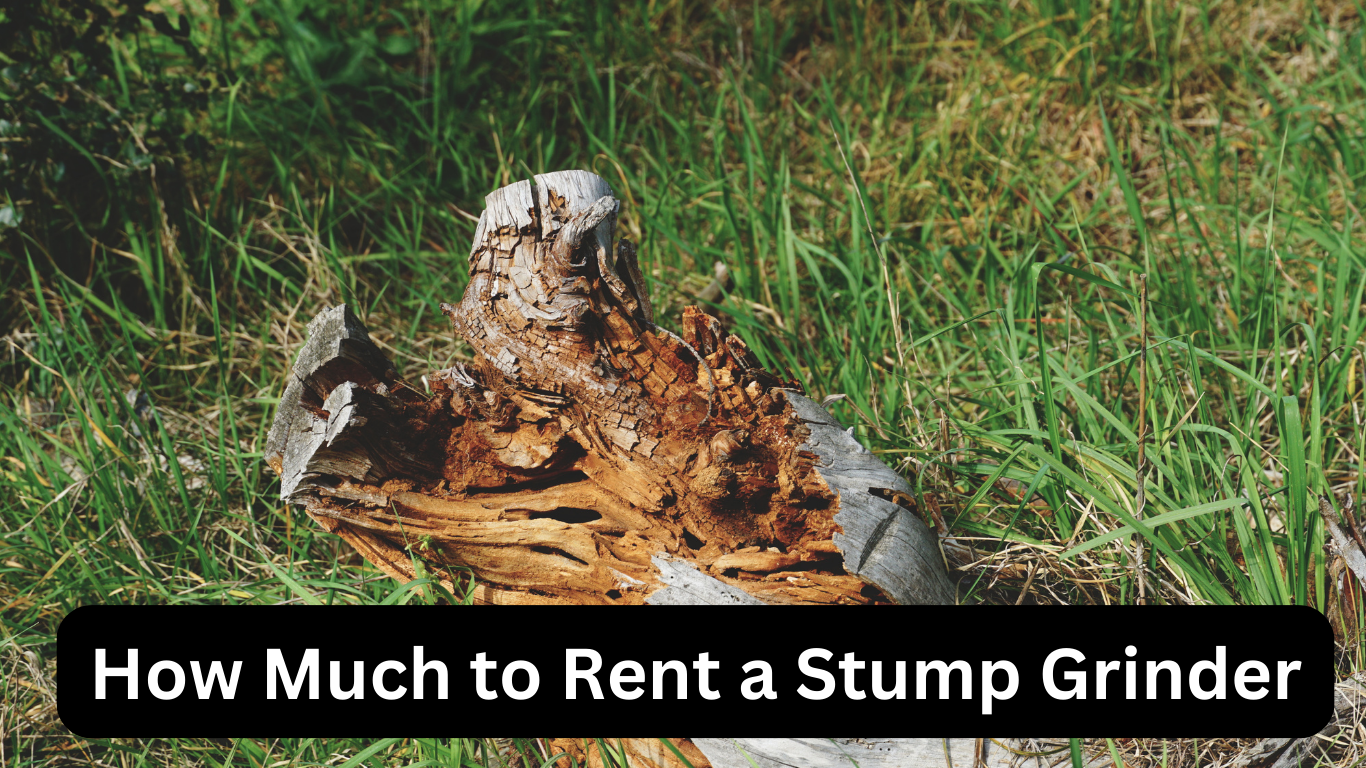If you face the challenge of eliminating tree stumps from your property, consider the practicality and affordability of renting a stump grinder. Yet, to navigate this process while keeping your budget intact, it’s crucial to grasp the variables that shape the rental cost and explore the options at your disposal. Within the confines of this guide, we will embark on a comprehensive journey into the realm of stump grinder rentals, uncovering the intricacies of the associated expenses, investigating the influences that dictate the prices, and furnishing you with invaluable tips to procure the optimal rental deal.
Factors Affecting Stump Grinder Rental Costs
The cost of renting a stump grinder can vary significantly based on several factors. One crucial aspect is the store you choose for the rental. Different stores offer different pricing structures, so it’s advisable to research multiple options in your local area to find the best deal.
Machine type and size also play a significant role in determining the rental cost. Stump grinders come in various types, including walk-behind and self-propelled models, each designed for specific tasks. The size of the machine, in terms of its cutting capacity and horsepower, can also influence the rental price.
How Much to Rent a Stump Grinder: Average Cost
On average, renting a stump grinder for a day costs around $270. However, this is just an average, and prices can vary based on location and other factors. The price range for daily rentals typically spans from $90 to $440, reflecting the diverse options available.
Specific Store Rental Prices
One of the most popular options for renting equipment like stump grinders is Home Depot. Their stump grinder rental prices range from $85 to $160 per day. Remember that these rates may vary depending on your location, so it’s a good idea to check with your local Home Depot for precise pricing details.
Rental Duration and Cost Comparison
Regarding rental duration, it’s essential to consider the cost per minute of usage. Hourly or half-day rentals are more expensive per minute than full-day rentals. While the initial price for a full day may seem higher, it makes sense for smaller projects. Opting for a full-day rental provides a 24-hour window to complete the work, offers comparable cost to a half-day rate, and safeguards you against unexpected delays.
Estimated Rental Costs for Different Durations
Here’s a breakdown of the estimated costs you might expect for renting a stump grinder:
4 hours:
- Walk-behind: $60 – $100
- Self-propelled: $100 – $200
Daily:
- Walk-behind: $100 – $275
- Self-propelled: $175 – $400
Weekly:
- Walk-behind: $350 – $900
- Self-propelled: $525 – $1,300
Monthly:
- Walk-behind: $900 – $1,900
- Self-propelled: $1,500 – $3,000
Tips for Getting Accurate Quotes
To ensure that you’re getting an accurate quote for your stump grinder rental, it’s recommended to call your local rental store. They can provide you with same-day pickup availability and a precise quote based on the specific machine you need. This personalized approach ensures that you clearly understand the costs associated with your project.
Alternative Rental Options
While Home Depot is a popular choice, there are other rental options to consider as well. Sunbelt Rentals and United Rentals are two alternatives worth exploring. These companies provide a range of equipment, including stump grinders, and may offer competitive pricing in your area.
Frequently Asked Questions
What is the Hourly Rate for Renting a Stump Grinder?
When it comes to renting a stump grinder on an hourly basis, this may not always be the most cost-effective option. Hourly rates can vary based on your location and the rental store you choose. Generally, hourly rates tend to be higher than daily rates due to the added convenience of short-term rentals. If you have a small stump to grind and are confident in completing the task quickly, hourly rates might be suitable. However, for most projects, opting for a full-day rental offers better value for your money.
What is the Difference Between Walk-Behind and Self-Propelled Stump Grinders?
Walk-behind and self-propelled stump grinders are two common types of machines used for stump removal, each with its own set of benefits:
- Walk-Behind Stump Grinders: These machines require you to guide the machine as it grinds the stump. They are typically more affordable and easier to transport, making them popular for DIY enthusiasts and minor projects.
- Self-Propelled Stump Grinders: These machines are equipped with wheels that allow them to move independently, reducing the operator’s required physical effort. They are ideal for larger projects and tougher stumps. While they might come with a higher rental cost, they offer efficiency and power for tackling challenging jobs.
What is the Largest Size of Stump Grinder Available for Rent?
Stump grinders come in various sizes; the largest available size can depend on the rental store you choose. Rental stores generally offer a range of stump grinder sizes to accommodate different project requirements. Larger stump grinders are typically used for more extensive tree removal projects or in commercial settings. If you have a considerable stump or multiple stumps to remove, you should inquire with your local rental stores about the largest size they have available for rent.
How Much Can I Make with a Stump Grinder?
If you’re considering using a stump grinder for business purposes, the potential earnings can vary widely based on location, demand, and the number of jobs you can secure. Stump grinding can be profitable, especially if you’re skilled and efficient. On average, stump grinding services can charge anywhere from $75 to $400 per stump, depending on the size and difficulty of the job. Investigating operating costs, equipment maintenance, and other overheads is essential when calculating potential earnings.
Why is Stump Grinding So Expensive?
Stump grinding might seem expensive, but several factors contribute to the cost:
- Equipment Costs: Stump grinders are specialized machinery that requires maintenance, repairs, and fuel. The initial investment and ongoing expenses influence the pricing.
- Labour and Expertise: Skilled operators must effectively and safely use stump grinders. The cost of labour accounts for a portion of the overall expense.
- The Job’s complexity: Some stumps might be located in challenging areas or require extra effort to remove, leading to higher costs.
- Operational Expenses: Rental stores have overhead costs reflected in their rental prices.
- Safety and Insurance: Operating stump grinders can be risky, so businesses need insurance coverage, contributing to costs.
- Market Demand: Prices can also vary based on supply and demand in your local area.
While stump grinding might appear pricey, it’s essential to consider the convenience, efficiency, and safety it offers compared to other stump removal methods.
Conclusion
Renting a stump grinder can save you time and effort when removing tree stumps from your property. By understanding the factors that influence rental costs and comparing options, you can make an informed decision that aligns with your budget and project requirements. Remember to research local stores, inquire about rental durations, and seek accurate quotes to ensure a successful and cost-effective stump grinding experience.




